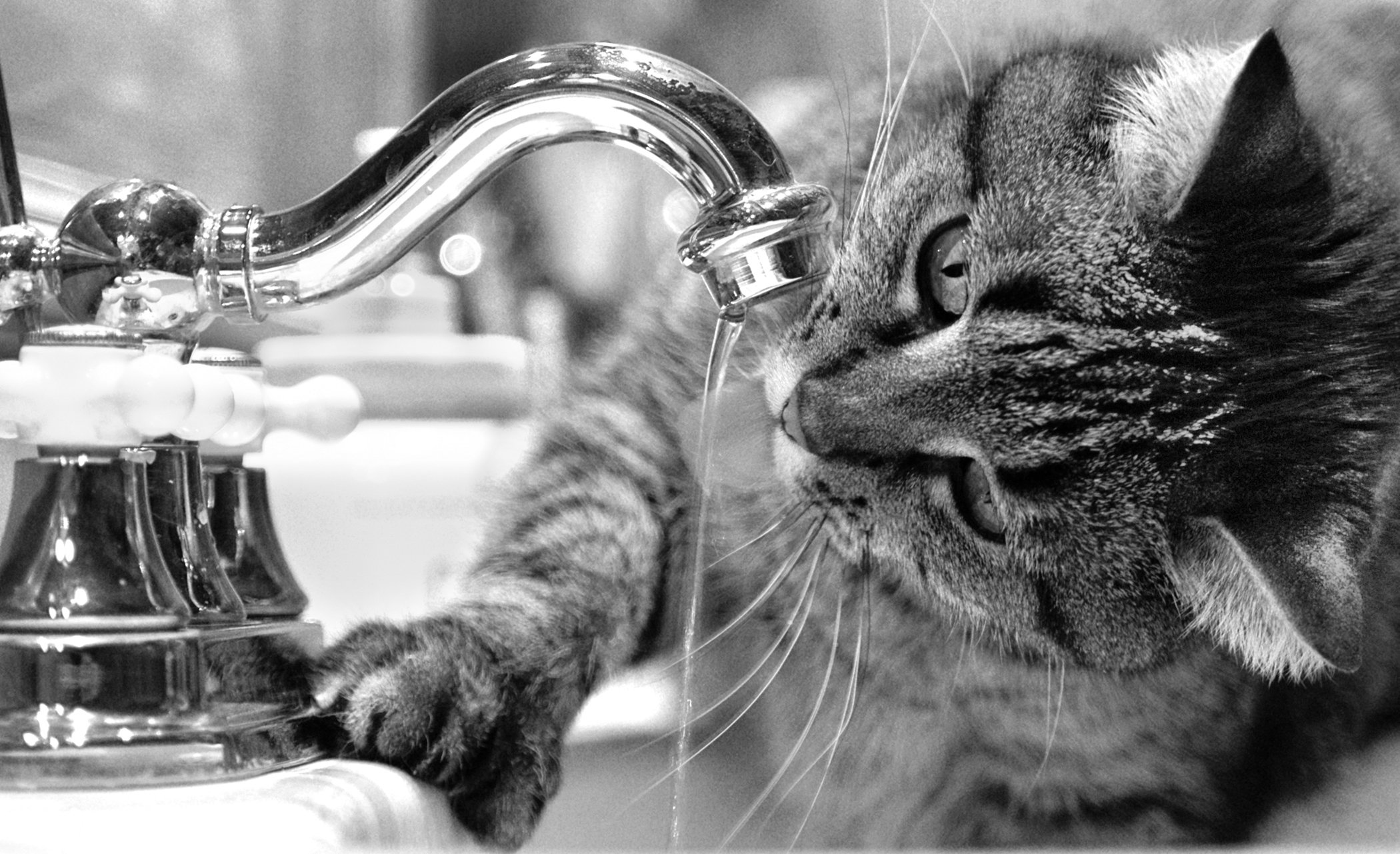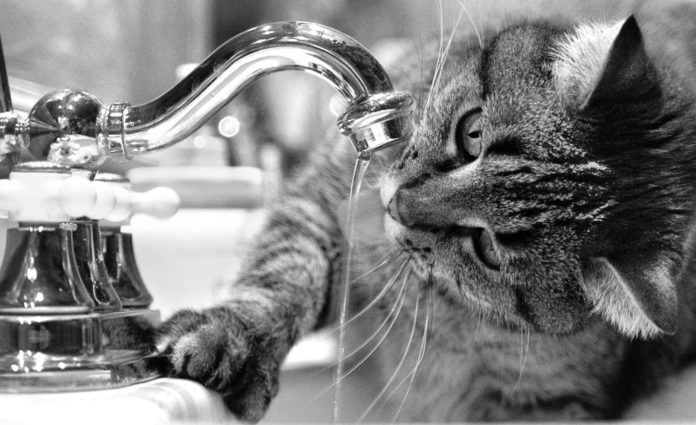Have you ever witnessed your cat scratching around the food bowl, attempting to cover the food or plop a toy in the water dish, and asked yourself: What’s happening here? You may have even wondered whether your cat is suffering from a medical condition (the answer is maybe; we’ll explain in a minute). But first, let’s take a closer look at some of the most common, albeit odd, food-related behaviors cats may exhibit.
Experts theorize
The reasons behind our cats’ puzzling behaviors relating to food remain something of a mystery, but several theories have been suggested. Some experts feel that the behaviors are related to a cat’s predatory nature, helping to satisfy a cat’s natural instict to hunt and find prey.
Nicholas Dodman, BVMS, veterinarian and Director of the Animal Behavior Clinic at Cummings School of Veterinary Medicine at Tufts University, speculates that cats view their food and water bowls as safe places to hide “prey” — in this case, toys.
“In the wild, mother cats will bring prey back for their kittens to eat,” says Dr. Dodman, author of The Cat Who Cried for Help. “In essence, when they put a toy in their food or water bowl, they’re acting instinctually becausethey think of the item as prey.”
Another possible explanation is that cats are manifesting a “gathering/collecting” behavior. Just as feral mothers will return wandering kittens to the nest or move them from one place to another by the nape of the neck, domestic cats will transport a wayward toy back to the feeding area for safekeeping.
Thinkstock

Wondering about water play
And then there’s the cat who dips her dainty paw in the water bowl or uses her paw to scoop out the water and lick it off her paw. Other than being cute, could there be a scientific reason for this behavior? Probably not, according to experts.
Most cats despise getting wet (remember the time you tried giving your reluctant cat a bath?), yet others are fascinated with water — especially when it’s trickling from a faucet or an automatic water fountain.
“Some cats are simply obsessed with water. It seems to be genetic and is more apparent in certain breeds,” says Dr. Dodman. “The American Shorthairs are notorious for knocking over their water bowls and they do it with such regularity that people who show this breed professionally must often anchor the bowl to the side of the cage so their cat can’t knock it over. The Turkish Van and Maine Coon breeds also like to play with water and they will bat at it — they are obsessed with dripping tap water.”
Oriental breeds at risk for pica
In addition to exhibiting odd food and water-related behaviors, some cats also have an appetite for non-food items: clothing and other fabrics, electrical cords and even pins and needles are enticing, yet dangerous, “snacks.” The Oriental breeds, such as the Siamese and Burmese, are more prone to chewing or swallowing these types of items — a medical condition known as pica. They risk gastrointestinal obstruction that requires prompt surgical removal.
Some speculate that pica and chewing or sucking on fabric — wool seems to be a favorite — are anxiety-driven and that certain cats take comfort in sucking on a sweater or blanket, much like an infant sucks his thumb to relax.
Helping your cat
To help mitigate the symptoms associated with pica, you can improve a cat’s mental and physical well being by providing climbing frames or ceiling-height cat posts, bird feeders set in windows and additional exercise or play time. It’s also a good idea to try to keep sweaters and blankets out of a cat’s reach as much as possible. Provide your cat with environmental enrichment tools such as kibble-filled balls with small openings for the food.
In severe cases, medication may be necessary to help control a cat’s urge to chew on clothing or other inappropriate items. Sometimes, anti-anxiety medication such as clomipramine, amitriptyline or Prozac can help, but it is not a permanent substitute for behavior modification and environmental changes.
As is often the case with our cats, what may seem like odd behavior to us makes perfect sense to them. It’s our job to interpret the signals and take appropriate action to ensure that our cats remain happy, healthy and safe.




